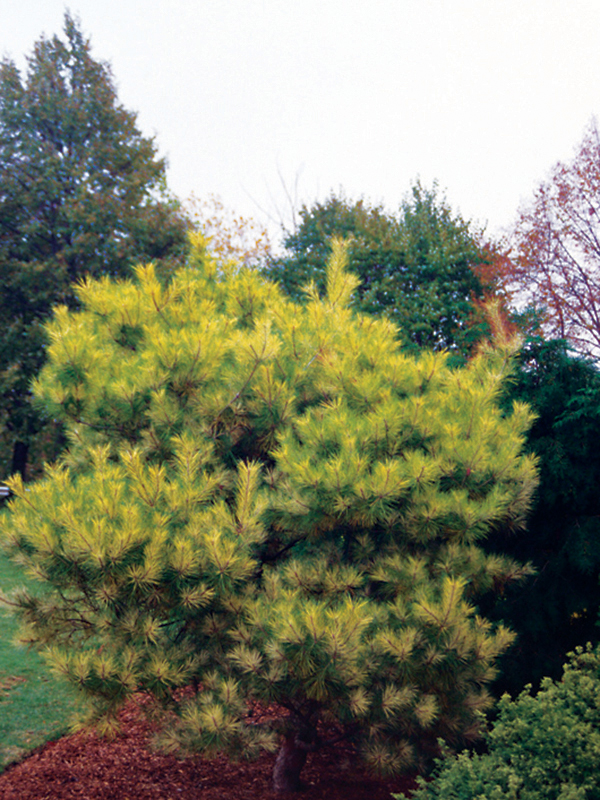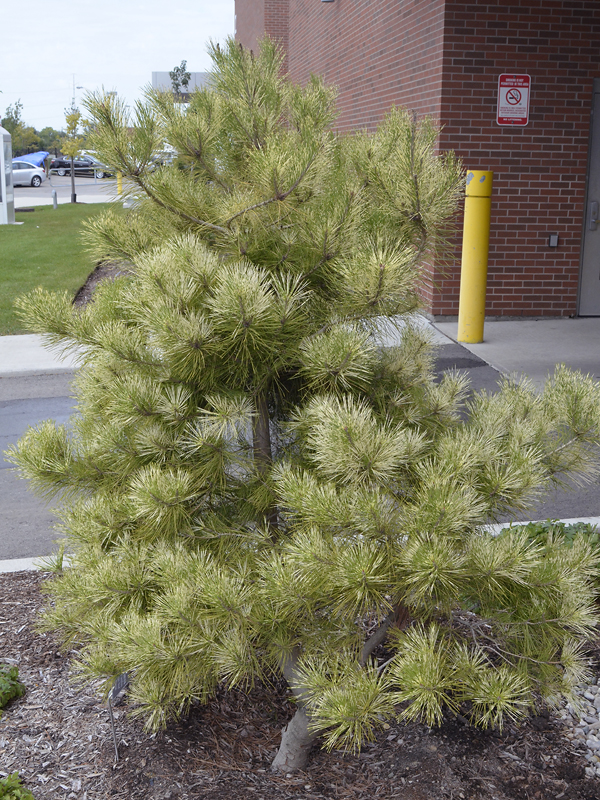
Woody > Pinus > Pinus densiflora > Pinus densiflora
Pinus densiflora
Japanese Red Pine
Origin: Native to northeastern China, Korea and Japan.
Mike's
Opinion


"
Virtually all aspects of its appearance are attractive. It develops a multi-trunked appearance at an early age. The reddish medium bark texture stands out beautifully in the winter landscape. The needles stay deep green in the winter months as well as in the growing season. This is definitely a tree to consider when looking for a focal point in any garden.
Michael Pascoe, NDP., ODH., CLT., MSc. (Plant Conservation)
"
| Family |
| Pinaceae |
| Genus |
| Pinus |
| Species |
| densiflora |
| Category |
| Woody |
| Type |
| Tree (evergreen) |
| Pronunciation |
| USDA Hardiness Zone |
| 3b–7 |
| Canadian Hardiness Zone |
| 5–7 |
| RHS Hardiness Zone |
| H7 |
| Temperature (°C) |
| -29 - (-34) |
| Temperature (°F) |
| -20 - (-39) |
| Height |
| 24 – 36 m |
| Spread |
| 12–17 m |
Photographs
Description and Growing Information
Flowering Period
| General Description |
| A straight to twisted (particularly in coastal settings) tree up to 36 m tall, with an open, irregular or umbrella-shaped crown. |
| Landscape |
| In Japan it is regarded as the most common planting. It’s also widely planted in forests for its timber in eastern China and Japan. It is variable in shape with a tendency to twist and knot, and is an excellent subject for pruning and shaping in the Japanese style. |
| Cultivation |
| Likes full-sun, well-drained, slightly acidic soils. |
| Shape |
| A small to medium sized tree that can reach heights of 24 m or more. The trunk is often leaning or a windswept look, branches are typically horizontal. |
| Growth |
| Slow |
| ID Characteristic |
| Needles are in 2's, soft and serrated. Bark tends to peel to reveal a redish colour. Tree has a fairly open multi-trunked growth habit for a pine. Needles are bright green and tend to have a plastic look to them. |
| Pests |
| Well situated plants should be relatively trouble free but root rot, canker, blight, scale and pine needle miner can be problems. |
| Habitat |
| Hills and low mountains all over Japan. Coastal regions to mountains, lakesides and rocky hillsides from near sea level to 900 metres. |
| Bark/Stem Description |
| Upper crown bark is redish in colour and peels in thin scales, very similar to Pinus sylvestris. Older bark develops plates and becomes grey. |
| Flower/Leaf Bud Description |
| Buds are cylindrical and are a red/brown colour, they are about 1.5 cm long. |
| Leaf Description |
| Evergreen needles in fascicles of 2, slender, twisted needles, 7–13 cm long, retained in bunches at the ends of twigs. Dark green needles appear tufted on the branches. A common cultivar, ‘Oculus-draconis’ is marked with two yellow bands. |
| Flower Description |
| Monoecious; males cylindrical, yellowish in clusters, 2.5 cm in size. Females tend to be more of a yellow-green to purple. |
| Fruit Description |
| Cones, singly or clustered, tend to be 5 cm long and dull brown with a short spine. The tree has a tendency to hold the cones for 2 years. |
| Colour Description |
| Needles are dark green in colour, bark is a redish in colour. |
| Texture Description |
| Medium coarse texture. |
| Notable Specimens |
| The Gardens of Fanshawe College, London, Ontario, Canada and the Royal Botanic Gardens Burlignton, Ontario, Canada. |
| Propagation |
| Sow stored seed as early in the year as possible, position it in light shade for best results. Seed should not be allowed to dry out and should be stored in a cool place. Prick out the seedlings into individual pots when they are large enough to handle and grow them in the greenhouse for their first winter. For soft wood cuttings take cuttings off mature lateral branches 5 cm long and plant them in pots 2.5 cm deep and water daily. |
References
Michael A.Dirr. Manual of Woody Landscape Plants. Champaign, Illinois: Stipes Publishing L.L.C, 1975.

